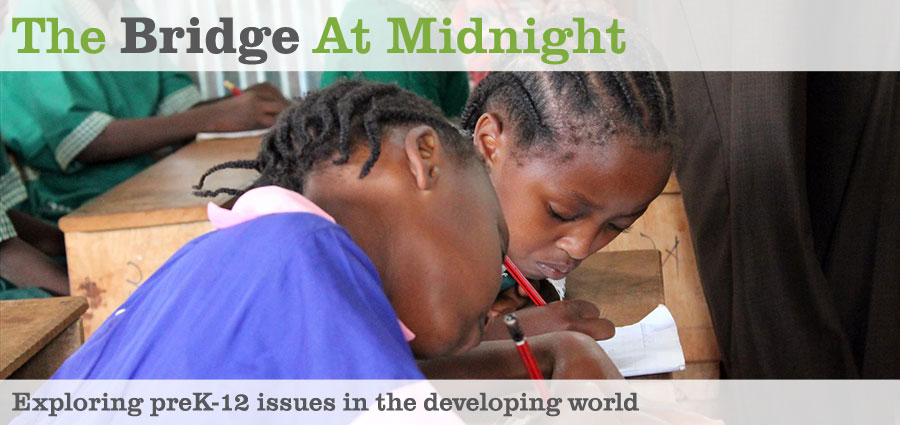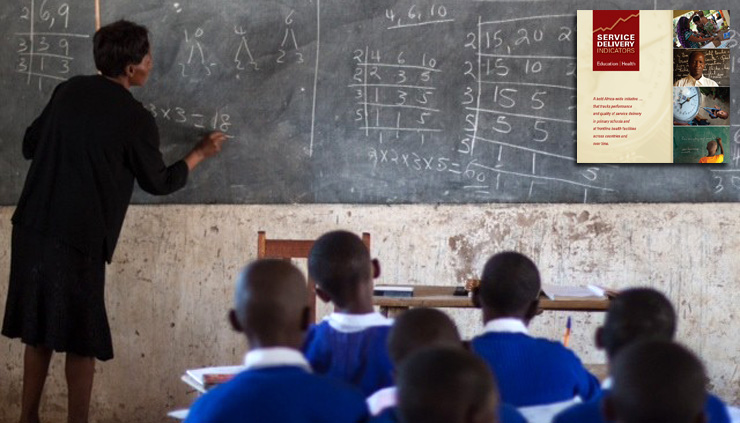160 minutes
Posted: July 26th, 2013 | Author: Michael Goldstein | | No Comments »
I’m trying to get some big picture context, even as our team here is mostly just immersed in day-to-day life of our academies. Figured I’d bring you along for the ride.
A new report from World Bank serves that purpose. The photo comes from their report. Our pupils wear green, not blue. Is that a Duke blue? Or a Carolina blue? I think a Duke blue. Those are probably top kids.
Children in public primary schools in Kenya are taught for only 2 hours 40 minutes a day, not even half the official teaching day of 5 hours 40 minutes.
That doesn’t sound good.
…The SDI findings for Kenya show that the country is doing better on the availability of key “hardware” like textbooks, equipment, and infrastructure than it is on the “software”, that is, the level of effort and knowledge seen and assessed among teachers and health providers.
Nearly all health facilities have sanitation, 80 percent of schools have enough light to read by, and textbooks per pupils exceeds Kenya’s target of three per pupil. On the medicines front, drugs for mothers remain a problem with only 58% of these drugs available in public facilities.
The modest level of effort by teachers and health providers seen in the SDI reflects room for improvement in the management of human resources. For example, over 29 percent of public health providers were absent from work (on any given day), but a full 80 percent of this was sanctioned absence.
Also, while teachers at public and private schools were about as likely to show up for work, public school teachers were 50 percent less likely to be in class teaching. Children in public schools receive an average of 20 days less teaching a term than those in private schools.
There’s also a new report from the good folks at Uwezo. The theme — Kenyan education in crisis — is the same, but the details are different.
In talking to parents in Nairobi, our team asked why they chose Bridge. One factor was: the teachers show up. In speaking to hundreds of Boston parents over the years, I’d never heard that before.
So Bridge pupils get more total instruction in a typical day than in nearby traditional schools. Does that drive achievement?
You’d think so. But it’s not a slam dunk. American research has shown a long school day is not enough to drive student achievement. This surprises some people, who assume a linear relationship between hours of school and total learning.
For example
Economists at the University of California Riverside…looked at schools across Mexico, where the time between the start of the year and a national exam varied from 143 to 183 days.
Despite ongoing efforts across Latin America to increase the time students spend in school, the researchers found that the time difference had little impact on students’ test results—and in the poorest districts, where students struggle the most, additional days seemed to have no effect at all.
A longer school day is common among the handful of the highest-performing urban charter schools in the USA. It’s certainly what I’m used to. But you need those minutes to be quality minutes.
Otherwise, the extra time is offset by the law of diminishing returns. If kids stopped trying hard at Minute #20 in a 50 minute class, they won’t learn more if you make the class last 80 minutes….
My guess is that the Bridge pupils benefit in 3 ways — teachers are with them for more hours in a typical day; that typical day is longer overall; and the teacher absentee rate appears to be lower.
One more from World Bank:
Among public teachers, only 35 percent showed mastery of the subjects they taught. Seniority and years of training did not correlate with higher levels of knowledge.
That’s generally true in the USA too. Experience has clear benefits only early on — a second year USA teacher outperforms a rookie. But a 12th year teacher does not outperform a 5th.



Leave a Reply